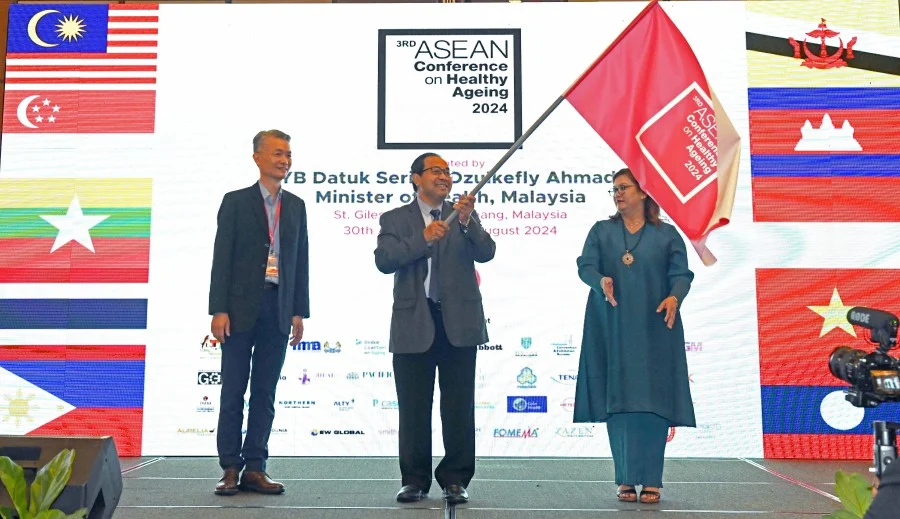
Malaysia, like many of its neighbours in Asia, is in danger of getting old before we know it.
CHALLENGES of the ageing population are no longer issues faced by developed countries. Developing countries are fast catching up and Malaysia is not spared.
In fact, the speed of growth in the number of the aged in developing nations is so alarming that innovative thinking at all levels is needed to address it if we are to avert a crisis, says Universiti Putra Malaysia (UPM) Institute of Gerontology director Prof Dr Tengku Aizan Tengku Abdul Hamid.
It is a “silent epidemic”, she says.
“While France took more than 100 years to double her population aged 65 and over from 7% to 14% (from 1865 to 1980), the older population in Malaysia aged 65 or over will take only 23 years to double from 7% in 2020 to 14% in 2043.
“So, compared with the more developed countries, Malaysia has a rather short time to prepare for the transition into an aged nation,” says Tengku Aizan.
It is therefore urgent to prepare the nation for this eventuality as it takes more than a decade for social institutions to change, she stresses.
One main problem is that ageing issues in the country are handled by separate agencies, making them fragmented and hampering them from providing the best solutions.
“There should a central planning body that oversees all aspects of population from the life course perspectives, with inputs from all stakeholders and made up of multidisciplinary team members who could analyse, organise and plan the kind of policies and programmes needed to best address the issues,” she says.
A nation is considered aged when the older population makes up 7% of its total population, Tengku Aizan highlights, quoting a US National Institute on Aging report, “An Aging World: 2008”.
As the study also points out, Sweden took 85 years to double her population aged 65 and over (1890 to 1975), Australia, 74 years (1938 to 2012), the United States, 68 years (1944 to 2012), Britain, 45 years (1930 to 1975) and Japan, 26 years (1970 to 1996) to double her population aged 65 years and over from 7% to 14%.
In contrast, developing countries such as China would only take 22 years to double her population aged 65 years (2001 to 2023), Singapore, 20 years (2007 to 2027), Korea, 18 years (1999 to 2017) and Vietnam, 16 years (2020 to 2036), she highlights, based on the findings of K. Kinsella & Y. J. Gist in their book Older Workers, Retirement and Pensions in 1995 as well as Tengku Aizan’s own calculations from the International Data Base (US Census Bureau, 2013).
Lower fertility rate, longer life expectancy and good public healthcare in developing countries contributed to the rise of the aged population.
However, as the World Health Organisation (WHO) has pointed out, while the process of population ageing in developed nations was in tandem with the development of social infrastructure and the nations were rich before they become old, developing countries were becoming older before becoming rich.
Another reason to be concerned about the growing ageing population, says Tengku Aizan, is that between 2050 and 2055, the number of older persons aged 60 years or over will equal the number of young people under the age of 15 years in Malaysia.
“All these changes will have significant implications for our economy and our society,” she says.
Asian countries face two major objectives in relation to population ageing – sustaining strong economic growth and providing economic security to the increasing number of older persons, she says, quoting researchers Sang-Hyop Lee, Andrew Mason and Donghyun Park’s (2012) paper “Why does population ageing mean so much for Asia?”
Dr Tan: ‘Rural health facilities are encountering difficulties in providing adequate care to its older population.’
They stressed the need to promote savings, investment in human capital, as well as well-functioning financial and labour markets including micro economic stability, while disagreeing with the provision of large transfer programmes for older persons.
Tengku Aizan says the approach adopted by governments to address population ageing issues will influence the productivity and economic growth of the nation (according to researchers D.E. Bloom, D. Canning and J. Saville, 2003, in “The demographic dividend: A new perspective on the economic consequences of population change”).
Researchers have already pointed out that the major issues currently experienced by the older population here include financial issues and health besides social protection, elder abuse, intergenerational care and built environment changes that needed to be made in home and public spaces.
Tengku Aizan says many current older persons belong to the pre-Merdeka cohort where educational opportunities were limited but this was expected to change significantly.
Although the Employers’ Provident Fund (EPF) has pointed out the lack of savings for many, studies have shown that while older people here have low income and little savings in old age, many own properties and land.
“This is consistent with the situation of older persons in other developed countries who are asset-rich but income-poor,” says Tengku Aizan.
UPM’s Malaysian Research Institute on Ageing research officer Chai Sen Tyng stresses that Malaysians cannot rely on EPF savings alone for retirement and should start planning for their old age from young.
“The social protection reform that is currently undertaken by the relevant government ministries and departments are trying to revamp current practices but changes are difficult without empirical evidence,” he says.
On healthcare, Tengku Aizan says a good public healthcare system has brought about population longevity.
United Nations’ population data shows that starting from 2000, the share of the older population aged 70 years or older has been growing and will increase substantially; octogenarians are expected to increase from 8% between 1970 and 2020 to 10% by 2030 and will triple over the next four decades, she says.
While those advanced in years will have higher functional disabilities and frailty as they suffer from chronic diseases, sleep disruption, psychological problems, and cognitive decline, their socio-demographic factors, environment and isolation could also influence the quality of life among the elderly.
“This calls for special services to address the needs of frail and disabled older persons,” says Tengku Aizan.
Chai points out that older Malaysians receive highly subsidised medical treatment at public facilities but affordable long-term care institutions for the frail and sickly elderly are lacking.
Federal-funded old folks homes and NGOs shelter relatively healthy or independent elderly, he says.
“Caring for the sick elderly requires skilled manpower and more resources, and not everyone can afford nursing home rates,” he says.
Although the government is spending almost half a billion ringgit (RM540.1mil in 2013) a year to assist the poor elderly through the Skim Bantuan Orang Tua under the Department of Social Welfare, he says it is not adequate or sustainable.
The funding models for aged care in Malaysia is still limited and there is a need to look into this, he adds.
Chai says institutionalisation or tertiary care is costly and more has to be done to support self and family care in elderly-friendly neighbourhoods.
Universiti Malaya geriatric medicine Associate Prof Dr Tan Maw Pin believes massive urban migration has burdened the urban health system while rural health systems that used to focus on child and maternal health do not have adequate facilities for the older people left behind.
“Rural health facilities are encountering difficulties in providing adequate care to its older population, especially as geriatric medicine is still a fledgling specialty in our country, and most medical schools here still offer little or no geriatric training,” she says.
She says limited effort has been directed to accurately characterising the issues associated with ageing that are unique to Malaysia.
“Unfortunately, this means that we now have little time to play catch up as we are now starting to climb the steep side of the exponential curve.”
Adds Dr Tan, with limited time and resources to develop effective solutions, it is important the government and other agencies do not rush into implementing policies without accurate local data to support these policies.
“It is instead vital that all agencies – government, charities, NGOs and academics – work together to develop well-designed, well-implemented solutions which will make Malaysia a great place to grow old,” she says.






